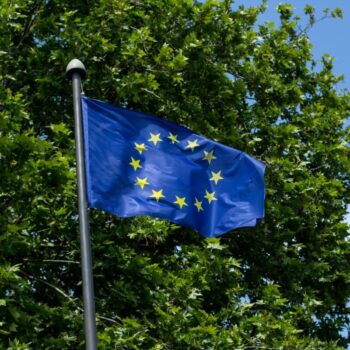Slowly but surely, the UK is inching towards developing a carbon border adjustment mechanism (CBAM). Despite their political differences, UK and EU interests in carbon border adjustments are highly aligned. Unlocking practical cooperation between the two sides on CBAMs in the near term would bring real gains, which could then help reset UK–EU relations in the future.
In May, the UK government announced its “intention to consult later in the year on a range of carbon leakage mitigation options”. It named product standards and CBAMs as two specific options. The government’s interest was confirmed in June, when it responded positively to the Environmental Audit Committee’s inquiry on a UK carbon border approach.
While Boris Johnson’s resignation as Prime Minister has caused uncertainties, it remains likely the new government will proceed with the UK’s CBAM policy development in the autumn.
A CBAM will interest the new Prime Minister from a range of perspectives: tax revenue raising, trade assertiveness, and net zero strategy provide several angles from which to at least green-light the consultation process, if not go further and more enthusiastically support the policy.
Even in the event of a general election, it is fully conceivable that both the Conservative and Labour manifestos could include commitments on carbon border adjustments.
Politics aside, in policy terms it is likely a UK CBAM will closely resemble the EU CBAM for three main reasons:
- Technical feasibility. Carbon border adjustments are complicated. Understanding the embodied emissions of imports is challenging, especially for more complex products, and translating this into a functional policy framework is hard. Given these challenges, the UK is likely to come to similar conclusions as the EU, even if the UK will also continue to champion multilateral approaches to methodologies.
- WTO rules. Ultimately, WTO rules are the same for both the EU and the UK. The EU has been at pains to create a WTO-compatible CBAM, the main principles being non-discrimination and having a clear environmental rationale. The UK will likely follow these design principles.
- Domestic policy coherence. In simple terms, the EU CBAM externalises the EU’s internal carbon market, the EU Emissions Trading Scheme (EU ETS). When the UK left the EU, it copied over the EU ETS into a UK ETS. For the time being these trading systems are nearly identical. On this basis it is also likely a UK CBAM would resemble an EU CBAM.
Therefore, a CBAM could become politically palatable in the UK on its own terms, but also highly compatible with the EU CBAM in policy terms. This opens several possibilities for UK–EU cooperation in the future:
- Climate diplomacy. CBAMs are contentious, with developing country concerns being particularly pertinent. Significant diplomatic outreach will therefore be required in future. Coordinated diplomatic activity on carbon border adjustments would help the UK and EU promote their shared interests internationally. This could also be done as part of the Climate Club recently launched by the German G7 Presidency.
- UK–EU ETS linking. Under the UK–EU trade agreement, the two sides committed to consider linking their Emissions Trading Schemes. Under the EU CBAM proposal, the only way to gain an exemption from the CBAM is by having a linked ETS with the EU. It would be in the UK’s interests to seize the economic benefits of linking its ETS with the EU ETS, unlocking the potential to cooperate both bilaterally and internationally on carbon pricing. It would also exempt British businesses from the administrative costs of EU CBAM compliance, which would otherwise act as a new trade barrier.
- Northern Ireland. Lastly, the special status of Northern Ireland is a factor, as it is with most areas of post-Brexit trade relations. Northern Ireland is part of the island of Ireland’s Single Electricity Market. The UK has confirmed it is already prioritising engagement with the European Commission in this area.
There is much at stake, but so many opportunities to grasp. Embedding a cooperative approach into the UK’s CBAM policy design from the outset should be a high priority.
Climate change is a shared priority for the UK and EU, and there are real gains to be made by unlocking cooperation between the two sides. Carbon border adjustments could be the new development that helps reset UK–EU relations for the future.


